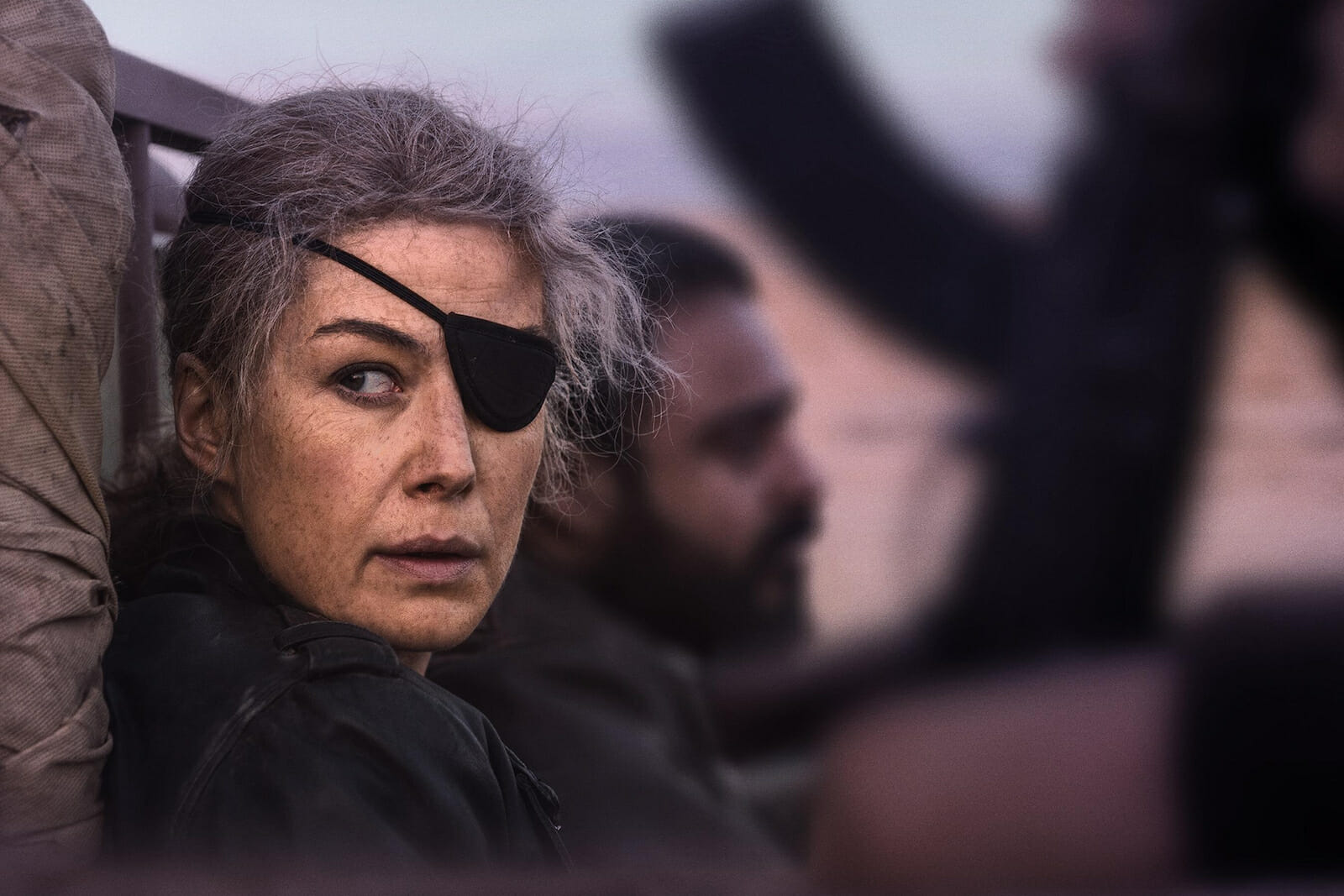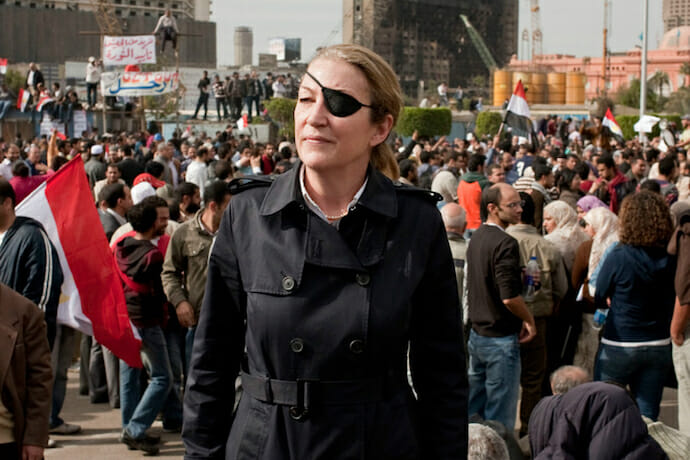
‘A Private War’ Review
Marie Colvin was a (seemingly) fearless war correspondent obsessed with giving a voice to those forgotten during war. Were she alive today, she could not have hand-picked a better filmmaker than Matthew Heineman to tell her story. Director Heineman was Oscar nominated for Cartel Land (2014) and, combined with his City of Ghosts (2017), gives him two of the best ever documentaries that show what the front lines are like in both international wars and the equally dangerous wars being fought over drug territories. Heineman has carried his own camera directly into the center of those storms, while Ms. Colvin took her pen and pad. Simpatico.
Based on Marie Brenner’s Vanity Fair article “Marie Colvin’s Private War” (screenplay by Arash Amel), A Private War benefits from the extraordinary and courageous work of Ms. Colvin, and also a terrific performance from Rosamund Pike (words I’ve not previously written). Ms. Pike captures the extremes of Ms. Colvin’s life – the atrocities of war and the self-prescribed treatment of her PTSD through vodka, and does so in a manner that always seems believable. She lets us in to a world most of us can’t imagine.
As a war correspondent for Britain’s Sunday Times (since 1986), Ms. Colvin told the stories we’d rather not know. In her words, “I saw it, so you don’t have to.” The film begins with a stunning overhead view of 2012 war-ravaged Homs, Syria (destruction courtesy of Assad’s soldiers) – a place that starts the film and later ends the story. We then flash back to 2001 London so we can witness Marie in society and struggling with a personal relationship. She then chooses, against her editor’s (Tom Hollander) guidance to cover Sri Lanka. It’s a decision that cost her an eye, while also providing her recognition as the eye-patch wearing female war reporter.
In 2003, a tip takes her to a previously undiscovered mass grave site in Fallujah. This is her first work alongside photographer Paul Conroy (played by Jamie Dornan). Having “seen more war than most soldiers,” Ms. Colvin’s severe alcoholism can’t kill the nightmares, visions, and PTSD. After time in a clinic, she returns to work. We see her in 2009 Afghanistan and then pulling no punches when interviewing Libya’s Muammar Gaddafi in 2011. During these assignments, we learn much about Ms. Colvin’s personality and approach. She is rarely without a cigarette, admits to wearing Le Perla lingerie (and why), carries Martha Gellhorn’s The Face of War as her field manual, and wins two British Foreign Journalist of the Year awards – though seeing her at the banquets is quite surreal.

Hollander’s subtle performance as news editor Sean Ryan is also quite impressive. He fears for her safety (and even questions her sanity) but is in constant conflict with the need to sell newspapers – something Ms. Colvin’s stories certainly did. Stanley Tucci has a role as Tony Shaw, her love interest, but despite her words, we never believe he and his sailboat are ever more than a distraction from her obsession with the front lines. The final sequence in 2012 Homs, Syria is stunning, as is her final interview with Anderson Cooper on CNN.
Ms. Pike has altered her voice to mimic the deeper tone of Marie Colvin – her efforts confirmed in the final interview played at the film’s end. It’s quite a career boost for Ms. Pike, who has previously been known for playing ice queens in films like Gone Girl. She captures the traumatized Marie, but also the obsession of someone whose DNA constantly drove her back to the stories that needed to be told.
Director Heineman’s unique perspective combined with the cinematography of 3 time Oscar winner Robert Richardson (a favorite of Scorcese, Tarantino, and Oliver Stone) delivers a realism of war that we rarely see on screen. Mr. Richardson also shot Salvador (1986) and Platoon (1986) and his work here surpasses both. The film gives us a glimpse at the psychological effects of such reporting, and a feel for the constant stress of being surrounded by tragedy and danger. This is fitting tribute to a courageous and very skilled woman, although I do wish the men weren’t constantly helping her out of trucks and jeeps.
